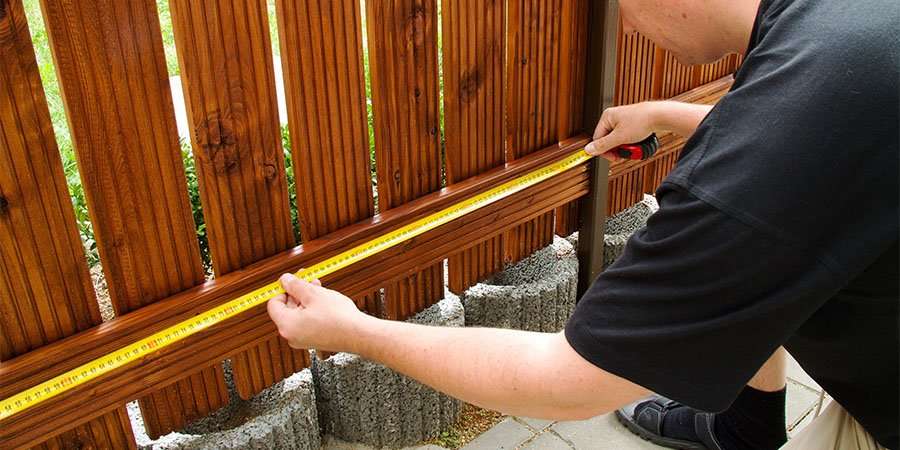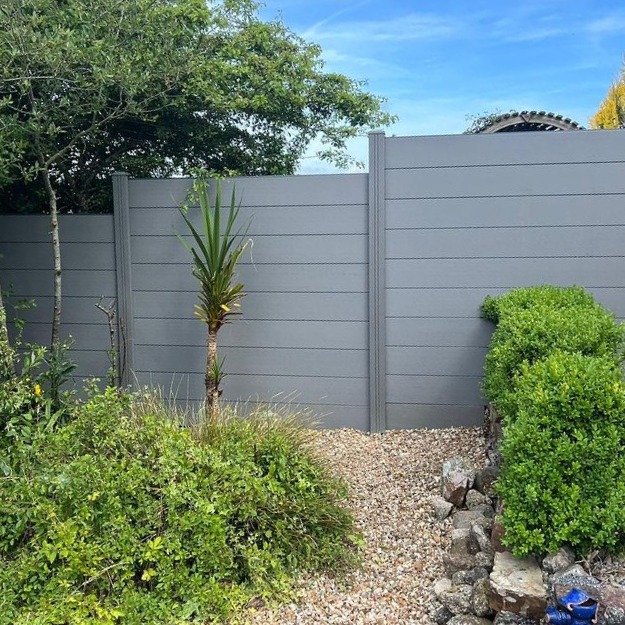All Categories
Featured

As homeowners and organizations alike become extra eco aware, discovering sustainable and green secure fencing materials is an essential factor to consider. Whether you're seeking to develop a fencing for privacy, security, or aesthetic allure, picking materials that lessen your environmental impact can aid secure the earth. In this post, we will discover a number of eco-friendly fence alternatives, each offering distinct advantages for your residential or commercial property and the setting.
- Bamboo Fence: A Renewable Energy. Bamboo is commonly acknowledged as one of the most sustainable and environment-friendly fence products available today. As a lawn instead of a tree, bamboo expands promptly and can reach full maturation in just 3 to 5 years, making it an extremely sustainable source.
Environmental Benefits: Bamboo absorbs much more co2 than many other plants, assisting counter greenhouse gases. Furthermore, bamboo requires very little chemicals and plant foods, making it a healthier choice for the environment. Sturdiness: Correctly treated bamboo is resistant to parasites and dampness, implying it can stand up to the aspects better than other wood choices. Visual Allure: Bamboo uses a tidy, modern-day appearance that functions well with various landscape design designs, from tropical yards to modern city designs. While bamboo secure fencing is durable, it does call for appropriate like keep its durability, such as routine cleansing and periodic securing.
- Recycled Timber Fence: Providing New Life to Old Products. Recycled wood is an excellent eco-friendly choice for those that want the all-natural charm of timber fence without adding to logging. This material is typically sourced from old buildings, pallets, or other repurposed timber products, reducing the demand for recently collected wood.

Environmental Benefits: Using recovered timber helps in reducing the requirement to reduce new trees and can additionally prevent useful products from winding up in landfills. Toughness: Relying on the type of timber and therapy it gets, recycled wood fencings can be just as sturdy as brand-new wood, especially if preserved properly with sealants and weatherproofing. Visual Appeal: Recycled timber fencings bring a rustic charm and can be discolored or painted to fit your personal style. The major consideration with recycled timber is its upkeep. With time, wood can become vulnerable to rot, insect damage, and weathering, so regular upkeep is needed to prolong the life of your fence.
- Steel Fencing: Recyclable and resilient. Aluminum and steel fencing, specifically when sourced from recycled products, uses a strong, environmentally friendly option to traditional wood secure fencing. These metals are 100% recyclable, indicating they can be repurposed indefinitely without losing high quality.

Environmental Benefits: Metals like light weight aluminum and steel decrease the demand for brand-new mining and basic material extraction, both of which have considerable environmental impacts. Additionally, recycling steels needs much less power contrasted to developing new metal from resources. Toughness: Steel fences are unbelievably strong, resistant to weathering, and require little upkeep compared to timber alternatives. Aesthetic Appeal: Metal fences can be created in smooth, modern-day styles, or more typical appearances, giving versatility for any type of home. While metal fencings are resilient and low-maintenance, they are not as efficient at providing privacy compared to wood or plastic options as a result of the rooms in between the bars or slats.
- Living Fencings: Natural and Green. Living fences, made from thick hedges, shrubs, or trees, give a environmentally friendly and natural choice to conventional fencing. Not only do they create a personal privacy barrier, but they additionally add to the setting by supporting wildlife and improving air top quality.
Environmental Advantages: Living fencings absorb co2, boost soil quality, and give habitats for birds and various other wildlife. In addition, they reduce environmental pollution and enhance air quality by filtering system contaminants. Toughness: While living fences need even more maintenance than other materials (e.g., pruning, watering), they can be extremely durable if effectively maintained. Aesthetic Appeal: Living fencings develop a stunning, all-natural limit that enhances the landscape and offers a organic and one-of-a-kind appearance contrasted to conventional fencing options. The key downside of living fences is that they call for ongoing maintenance and care, consisting of normal cutting and pest control.
- Hemp Secure Fencing: Lasting and strong. Hemp is a fast-growing and eco-friendly plant that can be utilized to create solid, eco-friendly secure fencing. Hemp fencing is made from natural hemp fibers, which are durable, eco-friendly, and resistant to pests.
Ecological Advantages: Hemp expands swiftly and needs little water or chemicals. It additionally helps sequester carbon, minimizing greenhouse gases in the ambience. When the fence is no longer needed, hemp is naturally degradable and can be composted. Toughness: Hemp is normally immune to mold and mildew and insects, which aids it withstand different climate condition and prevent the use of harsh chemicals. Sustainability: Hemp farming is much less resource-intensive compared to various other plants and assists keep dirt health with crop rotation. Hemp fencings are a fairly new option on the marketplace, and they may not be as widely offered as other materials. In addition, they may not be as commonly made use of for high-security applications.
Final Thought: Choose Eco-Friendly Fencing for a Sustainable Future. There are numerous green secure fencing materials to think about, each offering one-of-a-kind advantages for your building and the environment. Whether you pick bamboo, recycled wood, steel, living fences, or hemp, each option permits you to develop a practical and beautiful border while decreasing your environmental footprint. By selecting lasting materials, you add to a greener future and sustain the growing activity towards liable construction and landscape design practices.
Latest Posts
Explore Montclare Auto Repair’s Highly Requested Services and Why Drivers Trust Them
Published May 13, 25
1 min read
Enjoy with a View: Boat Up to Deauville Inn’s Coastal Patio
Published May 13, 25
2 min read
Experience the Flavorful Fare of The other day's Pub Wedding catering
Published May 12, 25
1 min read
More
Latest Posts
Explore Montclare Auto Repair’s Highly Requested Services and Why Drivers Trust Them
Published May 13, 25
1 min read
Enjoy with a View: Boat Up to Deauville Inn’s Coastal Patio
Published May 13, 25
2 min read
Experience the Flavorful Fare of The other day's Pub Wedding catering
Published May 12, 25
1 min read